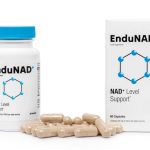Weight Loss Target Heart Rate: Ultimate Guide to Maximize Your Fat-Burning Potential and Transform Your Body

Weight Loss Target Heart Rate: Ultimate Guide to Maximize Your Fat-Burning Potential and Transform Your Body.
Discovering your weight loss target heart rate is the game-changing secret that separates successful weight loss journeys from frustrating plateaus. When you understand how to harness the power of your heart rate zones, you unlock your body’s natural fat-burning mechanisms and accelerate your transformation in ways you never thought possible.
This comprehensive guide will revolutionize how you approach fitness and weight loss by teaching you everything you need to know about your weight loss target heart rate. From understanding the science behind heart rate zones to implementing practical strategies that deliver real results, you’ll discover why monitoring your heart rate is the missing piece in your weight loss puzzle.

Understanding Your Weight Loss Target Heart Rate: The Foundation of Effective Training
Your weight loss target heart rate represents the optimal range where your body burns fat most efficiently. This isn’t just a number—it’s your personal roadmap to maximizing every minute of your workout and achieving sustainable results.
The Science Behind Heart Rate Zones
When you exercise within your weight loss target heart rate zone, typically 60-70% of your maximum heart rate, your body preferentially burns fat for fuel. This zone, often called the “fat-burning zone,” allows you to maintain a steady pace while your metabolism works at peak efficiency.
Your maximum heart rate can be estimated using the formula: 220 minus your age. For example, if you’re 35 years old, your estimated maximum heart rate would be 185 beats per minute. Your weight loss target heart rate would then fall between 111-130 beats per minute.
Why Your Weight Loss Target Heart Rate Matters More Than You Think
Training within your weight loss target heart rate offers several crucial advantages:
- Enhanced Fat Oxidation: Your body becomes more efficient at breaking down stored fat for energy
- Improved Metabolic Flexibility: You develop the ability to switch between fat and carbohydrate burning
- Sustainable Exercise Intensity: You can maintain longer workout sessions without excessive fatigue
- Reduced Risk of Overtraining: Staying within your target zone prevents burnout and injury
Setting Clear and Realistic Goals Using Your Weight Loss Target Heart Rate
Success begins with establishing specific, measurable objectives that incorporate your weight loss target heart rate as a key metric. This approach transforms vague intentions into actionable plans that deliver measurable results.
The SMART Framework for Heart Rate-Based Goals
Apply the SMART criteria to your weight loss target heart rate training:
Specific: “I will exercise within my weight loss target heart rate zone of 120-140 BPM for 30 minutes, 5 days per week.”
Measurable: Track your time spent in the zone, average heart rate, and weekly progress.
Achievable: Start with realistic durations and gradually increase as your fitness improves.
Relevant: Align your heart rate goals with your overall weight loss objectives.
Time-Bound: Set weekly and monthly milestones for heart rate training consistency.
Creating Your Personal Heart Rate Training Blueprint
Document your weight loss target heart rate and create a structured plan that includes:
- Daily heart rate zone targets
- Weekly progression goals
- Monthly fitness assessments
- Seasonal training adjustments
Nutrition Strategies That Complement Your Weight Loss Target Heart Rate Training
Proper nutrition amplifies the benefits of training within your weight loss target heart rate. The right fuel ensures your body can efficiently burn fat while maintaining energy levels throughout your workouts.
Macronutrient Balance for Optimal Fat Burning
When training within your weight loss target heart rate, your nutritional needs shift toward supporting sustained fat oxidation:
Healthy Fats (30-35% of calories): Avocados, nuts, olive oil, and fatty fish provide sustained energy and support hormone production.
Lean Proteins (25-30% of calories): Chicken, fish, legumes, and plant-based proteins maintain muscle mass during weight loss.
Complex Carbohydrates (35-40% of calories): Whole grains, vegetables, and fruits provide steady energy without blood sugar spikes.
Pre and Post-Workout Nutrition for Heart Rate Training
Pre-Workout (30-60 minutes before): Light snack combining protein and complex carbs to sustain energy during your weight loss target heart rate training.
Post-Workout (within 30 minutes): Protein-rich meal or shake to support muscle recovery and maintain metabolic rate.
Designing Your Weight Loss Target Heart Rate Exercise Program
Creating an effective exercise program centered around your weight loss target heart rate requires understanding different training modalities and how they impact fat burning.
Cardiovascular Exercise Options
Steady-State Cardio: Maintain your weight loss target heart rate for extended periods (30-60 minutes) through activities like:
- Brisk walking
- Swimming
- Cycling
- Elliptical training
High-Intensity Interval Training (HIIT): Alternate between your weight loss target heart rate and higher intensities to boost metabolism and improve cardiovascular fitness.
Circuit Training: Combine strength exercises with cardio intervals while monitoring your weight loss target heart rate throughout.
Strength Training and Heart Rate Monitoring
Resistance training can elevate your heart rate and contribute to fat burning when performed correctly:
- Monitor your weight loss target heart rate during compound movements
- Use shorter rest periods to maintain elevated heart rate
- Incorporate supersets and circuit-style training
- Focus on multi-joint exercises that engage large muscle groups
Amazon Product Spotlight: Polar H10 Heart Rate Monitor
To accurately track your weight loss target heart rate and maximize your training effectiveness, invest in a reliable heart rate monitor. The Polar H10 Heart Rate Monitor stands out as the gold standard for precision and reliability.
This chest strap monitor provides:
- 99.6% accuracy in heart rate measurement
- Bluetooth and ANT+ connectivity for seamless device pairing
- Waterproof design for all types of workouts
- Long battery life lasting up to 400 hours of training
The Polar H10 enables you to:
- Receive real-time alerts when you enter or exit your weight loss target heart rate zone
- Track your progress over time with detailed analytics
- Ensure consistent training intensity for optimal fat burning
- Connect with popular fitness apps for comprehensive tracking
Check out the Polar H10 Heart Rate Monitor on Amazon to elevate your weight loss target heart rate training and achieve faster, more consistent results.
Monitoring Progress and Adjusting Your Weight Loss Target Heart Rate Strategy
Regular monitoring ensures your weight loss target heart rate training remains effective and continues driving progress toward your goals.
Key Metrics to Track
Heart Rate Variability (HRV): Indicates recovery status and training readiness Resting Heart Rate: Decreases as cardiovascular fitness improves Time in Zone: Percentage of workout spent in your weight loss target heart rate Average Heart Rate: Trends over time indicate fitness improvements
Weekly Assessment Protocol
Conduct weekly evaluations of your weight loss target heart rate training:
- Review time spent in target zone – aim for 80% or higher
- Assess workout intensity – ensure you’re challenging yourself appropriately
- Monitor recovery metrics – adjust training if showing signs of overreaching
- Track body composition changes – weight, measurements, and body fat percentage
Adjusting Your Program Based on Progress
As your fitness improves, your weight loss target heart rate training needs to evolve:
- Increase workout duration gradually as endurance improves
- Add training frequency once you can consistently hit your target zone
- Incorporate variety to prevent adaptation and maintain engagement
- Reassess target zones every 4-6 weeks based on fitness improvements
Managing Stress and Sleep for Optimal Weight Loss Target Heart Rate Training
Stress and sleep quality significantly impact your ability to train effectively within your weight loss target heart rate and achieve your weight loss goals.
The Sleep-Heart Rate Connection
Quality sleep directly affects your weight loss target heart rate training:
- Recovery: Deep sleep allows your cardiovascular system to recover and adapt
- Hormone Regulation: Proper sleep balances cortisol, growth hormone, and other metabolic hormones
- Training Readiness: Well-rested individuals can more easily maintain their weight loss target heart rate
Stress Management Strategies
Chronic stress elevates cortisol levels, making it difficult to maintain your weight loss target heart rate effectively:
Meditation and Mindfulness: Regular practice reduces stress hormones and improves heart rate variability
Progressive Muscle Relaxation: Helps lower resting heart rate and improves training capacity
Breathing Exercises: Can be performed between exercises to help regulate heart rate during workouts
Building Support Systems for Weight Loss Target Heart Rate Success
A strong support network accelerates your progress and helps maintain consistency with your weight loss target heart rate training.
Finding Your Training Community
Online Heart Rate Training Groups: Connect with others who understand the importance of weight los target heart rate training
Local Fitness Classes: Join classes that emphasize heart rate-based training methods
Training Partners: Find workout buddies committed to monitoring their weight loss target heart rate
Professional Guidance
Consider working with professionals who understand weight los target heart rate training:
- Certified Personal Trainers with heart rate training specialization
- Exercise Physiologists who can conduct detailed fitness assessments
- Registered Dietitians who understand the nutrition-heart rate connection

Advanced Strategies for Weight Loss Target Heart Rate Optimization
Once you’ve mastered the basics, implement advanced techniques to maximize your weight los target heart rate training effectiveness.
Periodization and Heart Rate Training
Base Building Phase: Focus on maintaining your weight loss target heart rate for extended periods to build aerobic capacity
Intensity Phase: Incorporate intervals that take you above and below your weight loss target heart rate
Recovery Phase: Emphasize low-intensity training below your weight loss target heart rate
Heart Rate Variability Training
Use HRV data to optimize your weight los target heart rate training:
- High HRV days: Proceed with planned weight loss target heart rate training
- Low HRV days: Reduce intensity or take active recovery
- Trending patterns: Adjust training volume based on HRV trends
Environmental Considerations
Your weight los target heart rate can be affected by:
Temperature: Hot weather elevates heart rate; cold weather may lower it Altitude: Higher elevations increase heart rate at given intensities Humidity: High humidity makes it harder to maintain target zones Time of Day: Natural circadian rhythms affect heart rate patterns
Technology Integration for Weight Loss Target Heart Rate Success
Modern technology offers powerful tools to enhance your weight los target heart rate training and accelerate your results.
Smartphone Apps and Integration
Popular apps that support weight loss target heart rate training include:
- Strava: Comprehensive tracking with heart rate zone analysis
- MyFitnessPal: Combines nutrition tracking with heart rate data
- Polar Flow: Detailed heart rate analytics and training guidance
- Garmin Connect: Advanced metrics and training recommendations
Wearable Technology Beyond Heart Rate Monitors
Fitness Watches: Provide 24/7 heart rate monitoring and training guidance Smart Scales: Track body composition changes alongside heart rate improvements Sleep Trackers: Monitor recovery quality to optimize training
Troubleshooting Common Weight Loss Target Heart Rate Challenges
Even with the best intentions, you may encounter obstacles in your weight los target heart rate training journey.
Plateau-Breaking Strategies
When progress stalls despite consistent weight loss target heart rate training:
Vary Your Activities: Switch between different cardio modalities to challenge your body differently
Adjust Zone Targets: Reassess your maximum heart rate and recalculate zones
Increase Training Volume: Gradually add more time in your weight loss target heart rate zone
Cross-Training: Incorporate different activities to prevent adaptation
Dealing with Heart Rate Drift
Heart rate drift occurs when your heart rate gradually increases during sustained exercise:
- Stay Hydrated: Dehydration is a primary cause of heart rate drift
- Monitor Core Temperature: Overheating elevates heart rate unnecessarily
- Adjust Pace: Slightly reduce intensity to maintain your weight loss target heart rate
- Take Brief Breaks: Short rest periods can help reset your heart rate
Nutrition Timing and Weight Loss Target Heart Rate Training
Strategic nutrition timing can enhance your weight loss target heart rate training effectiveness and accelerate fat burning.
Pre-Workout Nutrition Strategy
2-3 Hours Before: Balanced meal with complex carbs, lean protein, and healthy fats
30-60 Minutes Before: Light snack such as banana with almond butter or Greek yogurt
Hydration: Begin hydrating 2-3 hours before exercise and continue throughout
During-Workout Fueling
For sessions longer than 60 minutes in your weight loss target heart rate zone:
- Electrolyte replacement to maintain proper heart rate response
- Light carbohydrate intake for sustained energy
- Consistent hydration to prevent heart rate drift
Post-Workout Recovery Nutrition
Immediate (0-30 minutes): Protein-rich snack or shake to support muscle recovery
1-2 Hours Post: Complete meal combining protein, carbs, and healthy fats
Continued Hydration: Replace fluid losses to support cardiovascular recovery
Real-World Success Stories: Weight Loss Target Heart Rate Transformations
Understanding how others have successfully used weight loss target heart rate training can provide inspiration and practical insights for your own journey.
Case Study: Sarah’s 50-Pound Transformation
Sarah, a 42-year-old marketing professional, struggled with weight loss for years until she discovered the power of weight loss target heart rate training. By consistently exercising within her target zone of 108-126 BPM for 45 minutes, 5 days per week, she:
- Lost 50 pounds in 10 months
- Improved her resting heart rate from 78 to 58 BPM
- Increased her exercise capacity by 40%
- Developed sustainable, enjoyable exercise habits
Key Success Factors: Consistency with heart rate monitoring, gradual progression, and combining cardio with strength training while maintaining her weight loss target heart rate.
Expert Insights: The Professional Perspective
Dr. Jennifer Martinez, Exercise Physiologist, emphasizes: “Weight los target heart rate training isn’t just about burning calories it’s about teaching your body to become metabolically flexible and efficient at fat oxidation. This creates lasting changes that support long-term weight management.”
Long-Term Maintenance and Weight Loss Target Heart Rate Evolution
Successful weight loss requires transitioning from active weight loss to maintenance while continuing to benefit from weight loss target heart rate training.
Adapting Your Program for Maintenance
Shift Focus: From weight loss to fitness improvement and health maintenance
Adjust Frequency: Maintain 3-4 heart rate training sessions per week
Vary Intensity: Include more high-intensity intervals while maintaining base fitness
Monitor Trends: Track long-term heart rate improvements and fitness markers
Preventing Weight Regain
Use your weight loss target heart rate training as a cornerstone of weight maintenance:
- Consistent Monitoring: Regular heart rate-based exercise prevents metabolic slowdown
- Seasonal Adjustments: Adapt training based on lifestyle changes and schedules
- Community Engagement: Stay connected with others who prioritize heart rate training
- Continuous Learning: Stay updated on new research and techniques
Future Innovations in Weight Loss Target Heart Rate Training
The field of heart rate based training continues evolving with new technologies and research findings.
Emerging Technologies
AI-Powered Coaching: Personalized heart rate training recommendations based on individual response patterns
Advanced Wearables: More accurate and comprehensive heart rate monitoring capabilities
Virtual Reality Training: Immersive experiences that maintain engagement during weight loss target heart rate training
Genetic Testing: Personalized heart rate zones based on genetic predispositions
Research Developments
Metabolic Flexibility: Better understanding of how heart rate training impacts metabolic adaptation
Personalized Zones: Moving beyond age-based formulas to individualized heart rate targets
Recovery Optimization: Advanced methods for using heart rate data to optimize training and recovery

Conclusion: Your Journey to Weight Loss Target Heart Rate Mastery
Mastering your weight loss target heart rate is more than just a training technique it’s a comprehensive approach to transforming your relationship with fitness and achieving sustainable weight loss. By understanding the science behind heart rate zones, implementing structured training programs, and consistently monitoring your progress, you create a powerful foundation for long-term success.
Your weight los target heart rate serves as your personal guide, ensuring every workout contributes meaningfully to your goals. Whether you’re just beginning your fitness journey or seeking to optimize your current routine, heart rate-based training provides the precision and effectiveness you need to achieve remarkable results.
Remember that success with weight los target heart rate training comes from consistency, patience, and a willingness to adapt your approach based on your body’s responses. Start with the basics, gradually build your knowledge and skills, and celebrate each milestone along the way.
The investment in a quality heart rate monitor like the Polar H10 will pay dividends in training accuracy and motivation. When you can see real-time feedback on your weight los target heart rate, you’ll find yourself more engaged and committed to your workouts.
Your transformation begins with that first step of understanding your weight loss target heart rate. Take the knowledge from this guide, implement it consistently, and watch as your body responds to this scientific approach to fitness. The path to your healthiest, strongest self starts with the rhythm of your heart make every beat count toward your goals.
As you continue on this journey, remember that your weight los target heart rate is not just a number it’s the key to unlocking your body’s natural ability to burn fat efficiently and achieve the lasting transformation you deserve. Stay committed, stay consistent, and let your heart rate guide you toward the success you’ve always wanted.

